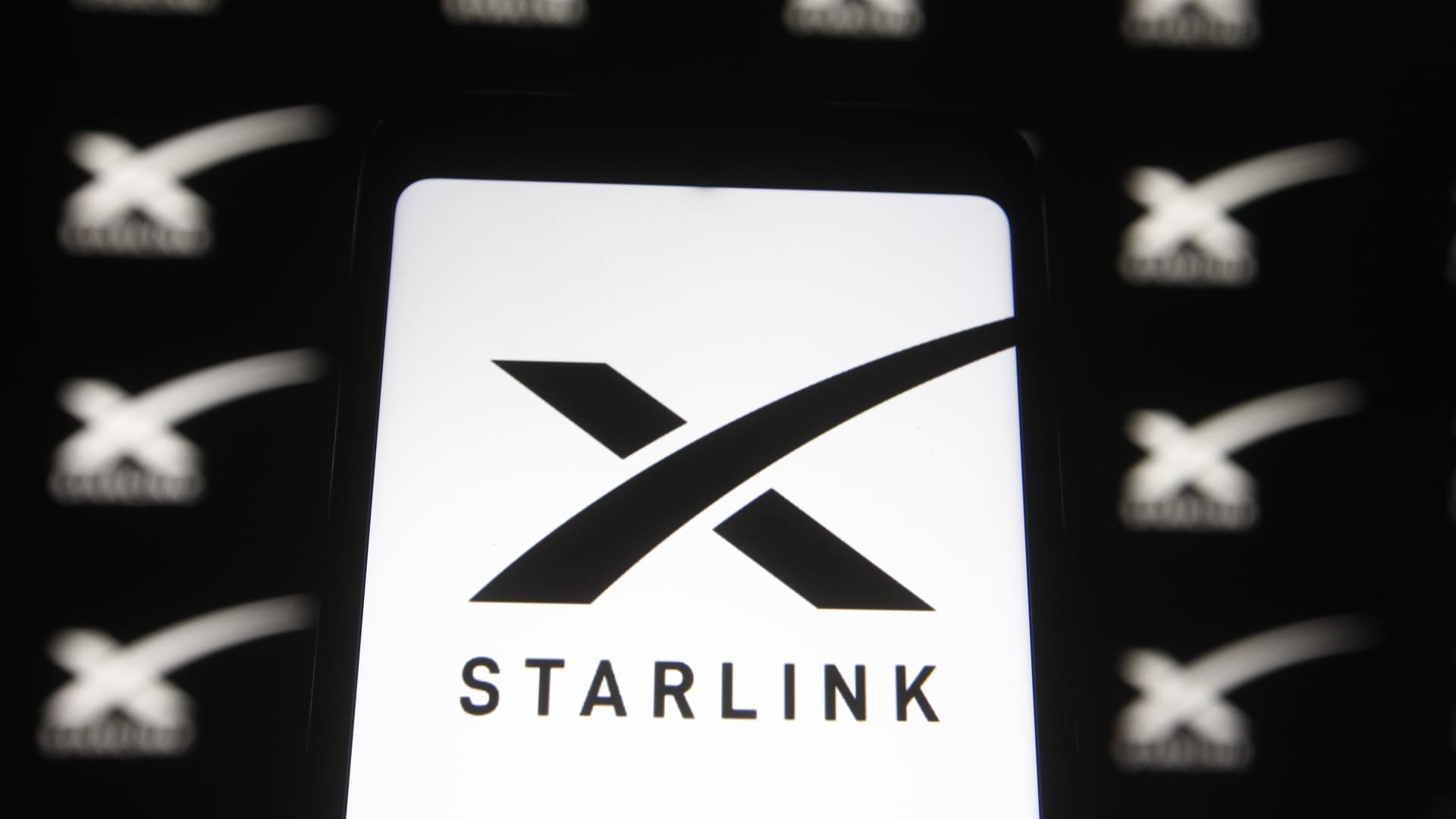AMC Entertainment has embarked on a meme-friendly experiment to give a token reward to its retail investor base while also creating a backdoor way to raise more cash down the line.The theater chain’s new preferred share class — called “APE” units — begin trading on Monday after being distributed to shareholders as a dividend last week. “APE” stands for AMC preferred equity.The special dividend seems to be in keeping with CEO Adam Aron’s aggressive marketing efforts to appeal to the retail investors who call themselves “Apes” and have rallied around AMC over the past year and a half.In some ways, the new shares are similar to the benefits of free popcorn and exclusive screenings that Aron has rolled out in recent months.However, the APE units are a corporate finance tool at their core because the shares create a new way for AMC to raise money. When its stock price soared in 2021, the beleaguered theater chain sold millions of common shares to keep itself afloat during the pandemic, but eventually it ran out of its allotment. Shareholders declined to approve additional sales.The initial APE units were distributed free of charge, but the company’s filings say it has the right to sell more of the units in the future — without additional shareholder approval. AMC said it is currently authorized to issue up to 1 billion APE units, and that it distributed a little more than half of that total with the dividend. Aron has made it known that the company could exercise the right to sell the rest to raise cash. “We believe APES should let AMC raise capital, pay debt and do more. Not good news for the doubters,” Aron said in a tweet. And AMC, which reported more than $10 billion in debt and other long-term liabilities at the end of second quarter, may need to raise cash. While there have been some big movie hits this year, and studios are signaling a pullback from streaming-only releases, the U.S. box office remains well below its pre-pandemic levels. Rival Cineworld, which owns the Regal Cinemas chain, said Monday that it is considering filing for bankruptcy.AMC raising additional money through the APE units would not be a surprise on Wall Street. “The creation of the APE Unit provides AMC with a path to raise incremental capital in the equity market. … We suspect AMC will take advantage of its current share price to lower its debt balance,” Citi analyst Jason Bazinet, who has a sell rating on the stock, said in a note to clients on Aug. 15. While the bottom line impact for AMC of the APE units will not be clear for a while, there are details that investors in both the APE units and the common stock should know now. Shares of AMC were down nearly 37% on Monday. Here is an overview of how the dividend process works and what shareholders should know. How the dividend worksThe APE units were distributed as dividends on Friday. In some ways, the unusual move resembles a stock split, where investors get additional stock proportional to every one share they previously owned. Each APE unit may be converted in the future to one common share of AMC, making this move like a 2-for-1 split.In theory, that should knock down the price of AMC’s stock. “It’s effectively a two-for-one stock split and I would expect that once it becomes effective, that the price per share should drop by about 50%. Just as happens normally with a two-for-one stock split,” said Jay Ritter, the Cordell professor of finance at the University of Florida. In this case, however, the two stocks are different classes. The new APE units trade under the ticker “APE,” while the AMC common shares will continue to trade under “AMC.”Once the APE units are distributed, they are no longer linked to the AMC shares and can be bought or sold separately. A document from AMC about the offering says that the APE dividend is not expected to be a taxable event for U.S. investors. However, investors who own partial shares of AMC may receive a small cash portion instead of fractional APE units, which could be taxable. The document also said that some brokerages may take “several days” to transfer the APE units into individual accounts.Bankruptcy considerationsBecause the APE units are preferred equity, there are different rights in a potential bankruptcy proceeding than the regular common stock.In the securities filing detailing the offering, AMC states that the APE units are above the common stock but below debt in the capital structure. That means that APE unit shareholders would get paid before common stock shareholders in a potential bankruptcy. Given AMC’s uncertain future, that discrepancy could cause the share prices of the APE units and the AMC stock to diverge. “It wouldn’t surprise me at all if the APE shares sell at a premium over the AMC common shares … [because] in the event of bankruptcy, the preferred shareholders would have priority over the common shareholders,” Ritter said. Potential dilutionThe issuance of new shares raises concerns about dilution for existing shareholders. This is one of the reasons why AMC shareholders had rejected the company’s previous efforts to issue more common stock.If AMC were to sell additional preferred shares, existing shareholders would see their claim on the assets and potential profits of the struggling theater chain watered-down even further.”AMC still has an upside-down capital structure that has seen a 400% increase in shares outstanding since the start of the pandemic along with its sizable $5.4bn debt load,” MKM Partners analyst Eric Handler wrote in a note to clients on Aug. 5. “The creation of a Preferred Equity Units (APE) class of stock once again provides AMC with dry powder to issue new shares for investment purposes. … The key question though from here is will future share issuances prove accretive or dilutive.”Handler has a sell rating and a price target of just $1 per share on AMC.Aron, for his part, has forcefully pushed back on dilution concerns, pointing out that the initial APE dividend does not change the ownership position for existing shareholders. He has also argued that dilution would be worth it if it helps AMC raise needed cash. “There’s bad dilution and good dilution. If added liquidity gained from dilution is wasted, it’s bad. However, if wisely handled, it is good. Indeed, for AMC in 2021, it was actually great for our shareholders,” Aron tweeted on Aug. 6.The extra cash could be used to fund acquisitions of other theaters, pay down debt or even push into unrelated businesses, like AMC’s 2021 purchase of a large stake in a gold mining company.— CNBC’s Michael Bloom contributed reporting. .
China tourist destination set a GDP target, but Covid locked it down
Sanya, on the southern coast of Hainan, was the top destination for couples flying from three of China’s largest cities last week for China’s version of Valentine’s Day, according to booking site Trip.com.Lucas Schifres | Getty Images News | Getty ImagesBEIJING — China’s tourist-heavy province of Hainan is falling further behind lofty growth goals it set in January.Back then, the island said it aimed for 9% GDP growth this year. But like China’s economy overall, growth is running far below initial targets — due in a large part to outbreaks of a far more transmissible Covid variant.A surge in Covid infections this month forced Hainan’s oceanside resort city of Sanya to order tens of thousands of tourists to stay put at their hotels, and local residents to stay at home. Haikou, the province’s capital, also issued stay-home orders.Airlines cancelled flights, leaving tourists stranded on Hainan island since Saturday. In the last few days, some people have been able to return to the mainland on government-organized charter flights.But questions remain — about uniform implementation of hotel stay subsidies, the cost of food and how soon most tourists can return to their homes.”The public image and reputation of Hainan is damaged for the short term,” said Jacques Penhirin, a partner in the Greater China office of Oliver Wyman. “When I talk to the client they’re all looking at the bookings for [the upcoming fall holiday] which are still quite resilient. People have not cancelled yet, but it’s not looking good. Probably down on last year.”It’s “going to be bad for luxury brands and hospitality at least until Chinese New Year next year,” he said, referring to the Lunar New Year holiday in late January 2023.Hainan’s economyIn late July, China’s top leaders indicated the country might miss the GDP target of around 5.5% set in March. Beijing did not signal any large-scale stimulus, or any change to its “dynamic zero-Covid” policy.The national economy grew by just 2.5% in the first half of the year, according to official figures. Hainan’s economy underperformed even that sluggish pace, only growing by 1.6% in the first half of 2022.That’s a sharp slowdown from the island’s 11.2% GDP growth for all of 2021.In fact, Hainan’s growth last year was second only to that of Hubei province, pointed out Ying Zhang, research analyst at the Economist Intelligence Unit.Read more about China from CNBC Pro”Because of the international travel restriction, Hainan has benefited from the tourism revenue, up by nearly 60% last year,” she said. Zhang estimates tourism accounts for more than 80% of Hainan’s economy.Sanya, on the southern coast of Hainan, was the top destination for couples flying from three of China’s largest cities last week for China’s version of Valentine’s Day, according to booking site Trip.com.The island boasts one of the few beachfront locations for international luxury hotels like Mandarin Oriental and Hyatt in mainland China.Hainan is also building out duty-free shopping malls as part of central government’s push to turn the island into a free trade hub and international shopping area.Sales at duty-free stores on the island surged by 84% last year to 60.17 billion yuan ($8.93 billion), according to official figures.During a consumer goods expo in Hainan in late July, sales at four duty-free stores rose by 27% year-on-year to 330 million yuan, the customs agency said.Another hit to confidenceSo far, cosmetics brands rely far more on Hainan for sales than affordable luxury brands — potentially up to a third of their China business, said Oliver Wyman’s Penhirin. He said Hainan generally accounts for less than 5% of China sales for affordable luxury brands, while high-end luxury has yet to enter that market.An Oliver Wyman survey in May found that after roughly two months of lockdown in the metropolis of Shanghai, respondents from luxury and premium consumer brands cut their China growth expectations for the year by 15 percentage points.Tens of thousands of tourists were stranded in the resort city of Sanya, Hainan, this week as local Covid outbreaks prompted airlines to cancel flights.Str | Afp | Getty Images”The question is definitely when will consumer regain confidence and peace of mind of travel and shopping which is further delayed by this Hainan incident,” Penhirin said, noting he expects this month’s lockdowns will be forgotten in one or two years.”It’s more about the confidence than the income itself, especially for the luxury goods,” he said.In the meantime, he said brands should put more effort to track their inventory in China, to make sure products aren’t being sold at levels that might induce a price war. .
Satellite internet tier at $500 per month
SpaceX has quietly rolled out a new, more powerful “premium” tier of its Starlink satellite internet service that’s targeted at businesses and enterprise customers.The new product, which was added to the company’s website Tuesday night, comes at five times the cost of the consumer-focused standard service. Starlink Premium requires a $500 refundable deposit, a $2,500 fee for the antenna and router, and the service costs $500 per month.The standard Starlink service, which launched in October 2020, has a $99 refundable deposit, a $499 hardware fee and the service costs $99 per month.Elon Musk’s company is touting improved hardware, faster service speeds and priority support in its pitch to prospective premium customers.”Starlink Premium has more than double the antenna capability of Starlink, delivering faster internet speeds and higher throughput for the highest demand users, including businesses,” the SpaceX website said.The first premium deliveries will begin in the second quarter, the Starlink website notice added.Starlink Premium also offers “unlimited service locations” flexibility. Unlike the standard product, which only guarantees service at a specific service address, SpaceX says Starlink Premium is capable of connecting from anywhere.”Order as many Starlinks as needed and manage all of your service locations, no matter how remote, from a single account,” SpaceX said.Starlink Premium users can expect download speeds of 150 megabits per second to 500 megabits per second, with latency between 20 milliseconds to 40 milliseconds, the company said. For comparison purposes, the standard service advertises speeds between 100 megabits per second to 200 megabits per second, as well as a tighter latency range.Additionally, SpaceX said the Premium satellite antenna “is designed for improved performance in extreme weather conditions,” although the website offered no further details. The standard Starlink product features a “snow melt functionality” to remove snow and ice.SpaceX continues to advertise unlimited service usage, saying that “at this time there are no data caps.”The company’s standard product has more than 145,000 users in 25 countries worldwide as of January, with nearly 1,900 satellites in orbit. .
The time is right to position your bakery product as guilt-free and conveniently nutritious
Pre-packaged bakery is a staple item for consumers across the globe, with the majority purchasing bread, cakes and biscuits on a weekly basis.“This is not surprising given that the option remains a staple ingredient for informal and casual eating occasions in the morning and the afternoon,” said Will Cowling, marketing manager for the Hertfortshire-based market researcher.“Standard bread products remain a more popular option than better-for-you alternatives, however, there is a rise in consumers looking to address their health.”According to FMCG Gurus, the number of consumers more focused on health is higher than ever before, which is driving the back-to-basics approach to nutrition.So, what will this mean for the bakery market?Health vs indulgenceCowling said the extent to which consumers prioritise indulgence over health in many product categories shows there is scope for brands to push the boundaries of premium through promoting experimental and hedonistic flavours, as well as the use of high-quality ingredients that will help position products as a genuine experience.“When it comes to flavours and sensory appeal, consumers tend to prefer traditional flavours,” he added, noting FMCG Gurus research shows 7 in 10 consumers prefer chocolate, raspberry and vanilla.“As well as the hedonistic element, these flavours will appeal to consumers because they are associated with trust and comfort. This is crucial in a time of uncertainty when consumers are prone to turning to products for moments of escapism from daily stresses.”Although a sensory appeal is key when it comes to a baked treat, consumers still scrutinise the label to monitor (or eliminate) certain ingredients. On average, 35% of global consumers claim they regularly check nutritional labelling – and their top priority: sugar content.Sugar has long had a reputation as a dietary evil because of the link between excessive intake and rising levels of obesity and diabetes. In fact, Cowling said the war on sugar is expected to intensify over the next few years, especially as the general population has noticed a weighty gain as a result of reduced levels of activity and increased levels of comfort eating during lockdown.Elimination vs additionHowever, he noted that consumers today are not only looking to avoid or moderate their intake of certain ingredients, but would like to include more functional ingredients.“This is a trend that has also intensified as a result of COVID-19, with consumers seeking out active ingredient claims on products in order to minimise vulnerability to disease and illness,” said Cowling, adding this has certainly created an opportunity for fortification within the bakery market. Particularly protein, with 53% of global consumers to find high protein claims appealing in the bakery market.“Protein continues to have something of a health halo attached to it because of its association with a variety of wellbeing benefits, meaning many consumers are adopting the ethos of the more protein in their diet, the better.While consumers prioritise indulgence when seeking out pre-packaged bakery products, that means the importance of nutritional value cannot be dismissed.“One way for bakery brands to respond is by positioning products as guilt-free and conveniently nutritious, by promoting active ingredients like high fibre and protein content.” This is bound to appeal as consumer embrace the concept of positive nutrition and are looking to maximise their intake of functional ingredients, concluded Cowling. .
Damocles Sword on oil stocks: Is it time for you to rethink your position?
Web Exclusive
The government has levied Rs 6 per litre tax on ATF and petrol exports and imposed Rs 13 per litre tax on diesel exports
Topics
oil stocks | petrol export | Stock Market
Shares of oil upstream companies, including Reliance Industries (RIL), ONGC, and Oil India, came under heavy selling pressure on Friday after the government imposed taxes on the export of petrol, diesel, and aviation turbine fuel (ATF), as it mandated exporters of these products to meet the requirements of the domestic market first.
TO READ THE FULL STORY, SUBSCRIBE NOW NOW AT JUST RS 249 A MONTH.
Key stories on business-standard.com are available to premium subscribers only.
Already a premium subscriber? LOGIN NOW
SUBSCRIBE TO INSIGHTS
MONTHLY
₹
249
Select
ANNUAL
₹
1799
Select
Best Offer
SMART ANNUAL
₹
1799
Opt for auto renewal and save Rs 300
Select
What you get on Business Standard Premium?
![]()
5 ARTICLE PACK
PAY AS YOU GO
₹
150
/for 5 articles
* Terms
- 1. Lorem Ipsum is dummy Text
- 2. Lorem Ipsum is dummy Text
VIEW ALL FAQs
 Dear Reader,
Dear Reader,
Business Standard has always strived hard to provide up-to-date information and commentary on developments that are of interest to you and have wider political and economic implications for the country and the world. Your encouragement and constant feedback on how to improve our offering have only made our resolve and commitment to these ideals stronger. Even during these difficult times arising out of Covid-19, we continue to remain committed to keeping you informed and updated with credible news, authoritative views and incisive commentary on topical issues of relevance.
We, however, have a request.
As we battle the economic impact of the pandemic, we need your support even more, so that we can continue to offer you more quality content. Our subscription model has seen an encouraging response from many of you, who have subscribed to our online content. More subscription to our online content can only help us achieve the goals of offering you even better and more relevant content. We believe in free, fair and credible journalism. Your support through more subscriptions can help us practise the journalism to which we are committed.
Support quality journalism and subscribe to Business Standard.
Digital Editor
First Published: Fri, July 01 2022. 12:08 IST !function(f,b,e,v,n,t,s){if(f.fbq)return;n=f.fbq=function(){n.callMethod?n.callMethod.apply(n,arguments):n.queue.push(arguments)};if(!f._fbq)f._fbq=n;n.push=n;n.loaded=!0;n.version=’2.0′;n.queue=[];t=b.createElement(e);t.async=!0;t.src=v;s=b.getElementsByTagName(e)[0];s.parentNode.insertBefore(t,s)}(window,document,’script’,’https://connect.facebook.net/en_US/fbevents.js’);fbq(‘init’,’550264998751686′);fbq(‘track’,’PageView’); .









